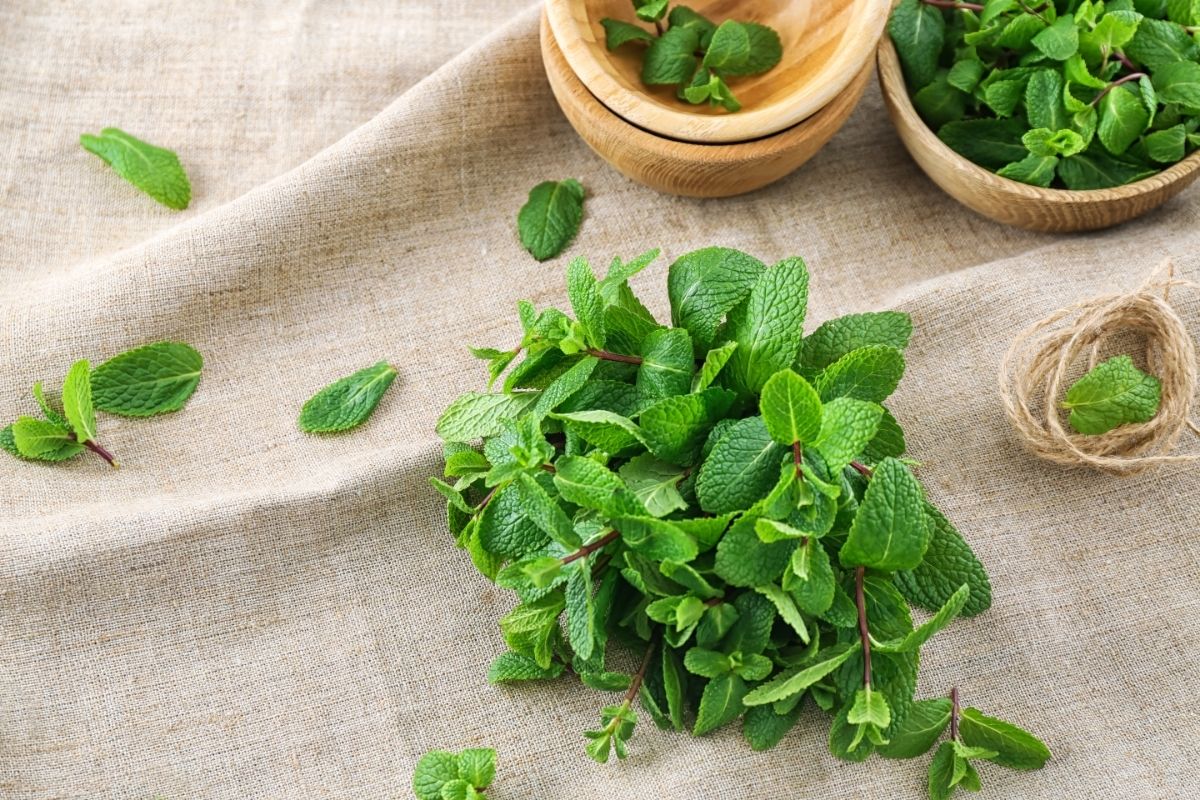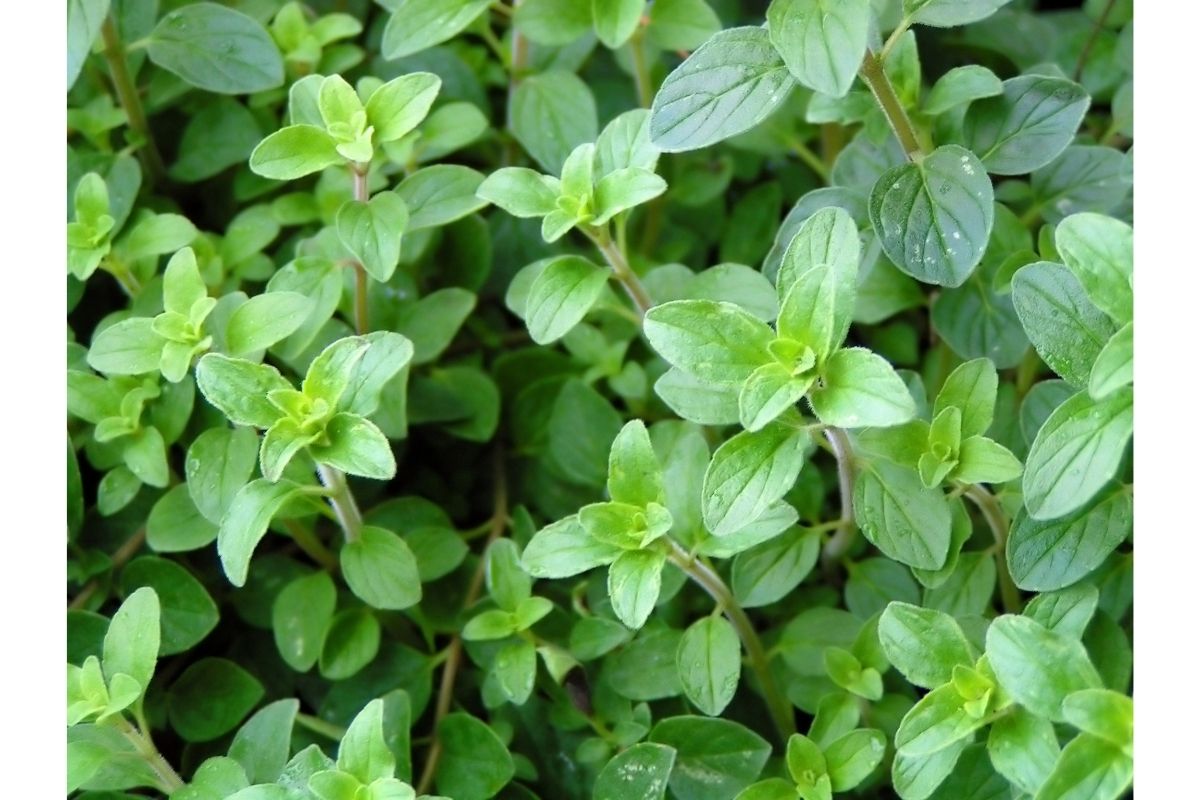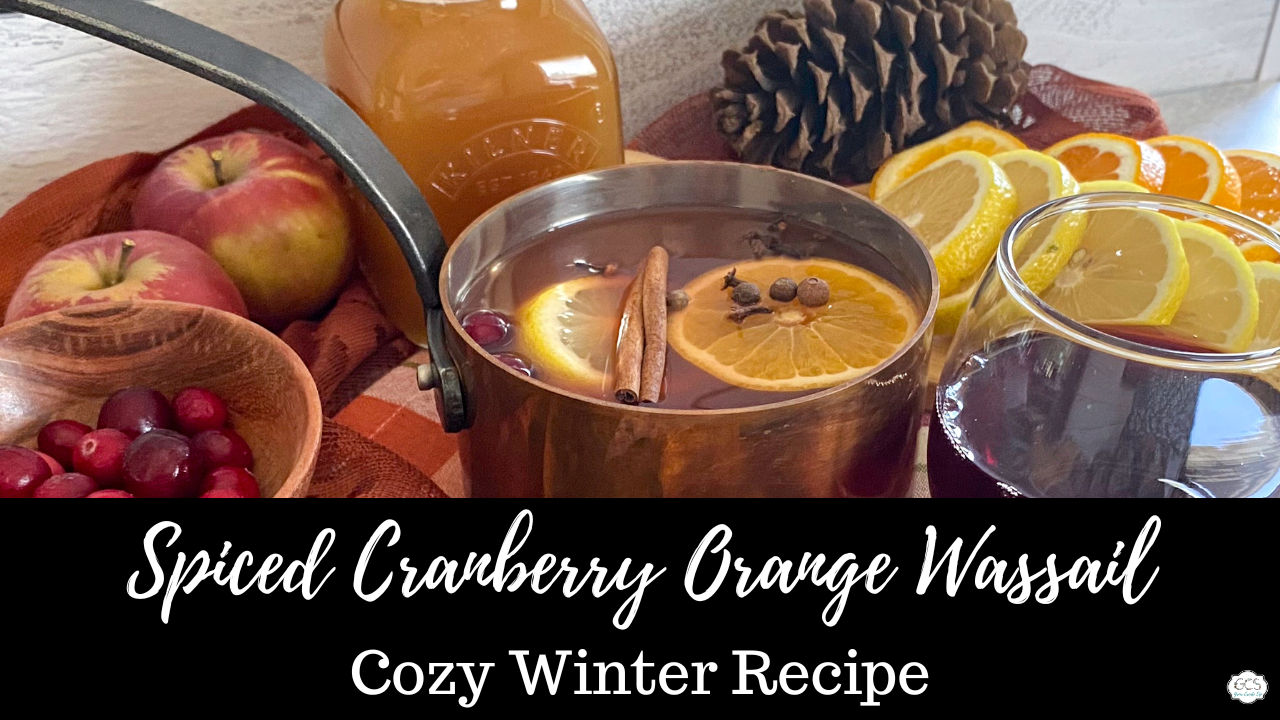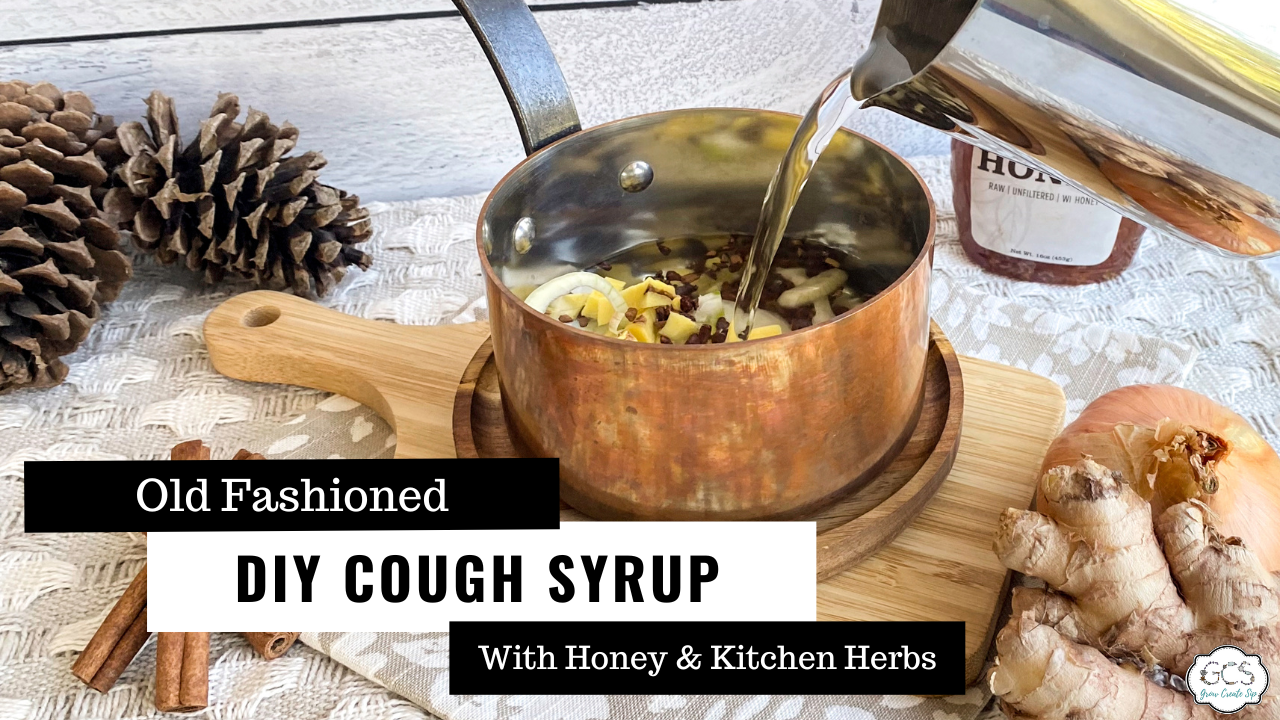10 Herbs to Grow for Tea
Jun 21, 2021
Planting an herbal tea garden is a fantastic way to add health and joy to your home. There are ten herbs that I recommend for any tea enthusiast, and the following herbs are easy to grow with countless uses and flavor combinations.
Don’t forget your herb harvesting tools! We have our top tool must-haves for sale right here in the tea garden shop!
We’re frequently asked questions about herbs. How to grow an herb garden, the best herbs to use for tea, how to blend herbs for tea, using wild herbs for tea, what herbs taste good together, etc.
We found creating a blog, or a central place to send those people for answers, was the best solution, and this post is no exception.
Herbs and botanicals from your yard are definitely options for blending a fabulous herbal tea. It can be as simple as a fresh mint tea infusion or it can be more in-depth like one of our blends from our D.I.Y. Medicinal Teas Ebook.
It is really about what flavor and purpose you have in mind and what herbs you have on hand. There is so much you can do with just ten common botanicals which happen to be simple and easy to grow.
Today we are sharing our favorite 10 and how we might put them to use in our farm tea studio.
Before we start:
This herbal information is just that, information. This blog post and I do not intend to treat, cure, or diagnose any disease or illness. This is for informational, education and entertainment purposes only. Please consult a physician before using herbs medicinally.
This post also contains affiliate links throughout. Translation: We get a little kick back for sharing certain products, at no additional cost to you, should you choose to purchase said items. And thank you for supporting our farm and family! Read the full disclaimer here.
#1 Calendula

If y'all have been around this blog for very long or are part of our email list and free members area, then you know how I love calendula. Which is why calendula is numero uno on my list of top 10 herbs to grow for tea.
But in case you don't know the story..... When we were living in our tiny duplex, in town, on a city lot and right on a main street, we had 9 above ground garden boxes. These were really my first success at growing food and herbs. I bought a bundle of seed packets from a company who was having a $5 dollar special on a bunch of random seeds that they needed to turn over in their inventory.
Can you guess what one of them was?
Yep, Calendula. This brown thumb of mine, planted this little packet and before I knew it I had a bazillion calendula flowers. OK maybe not that many, but it seemed that way. (Besides bazillion isn't even a number is it?)
What was a girl to do?
I made lots of infused oil with them, that I turned into salve (like soild lotion) and gifted and gifted and still had too much. Well, here we are now, with our own successful tea shop and homemade herbal medicine. See one one little seed can do?!
Calendula isn't just good for salve and skin though, it's also good for your internal skin - your intestinal system. Calendula can also aide in moving the lymphatic system. Aside from health benefits, calendula petals are used in our teas to add a punch of color and a light floral flavor and scent. Such as in our Rose Garden Repose Herbal Tea.
Whichever reason you use, calendula are simple to grow.
They reseed themselves and are beautiful as well as useful to have around. There are also many different colors and shapes of calendula too making them extra special fun to grow.
READ MORE ABOUT CALENDULA HERE
#2 English Thyme

Everyone needs more thyme? No? OK, I'll stop with the puns.
Thyme is not only a great culinary herb to have in the potager, kitchen garden or a pot in the house, but it is also useful in tea.
Thyme is helpful when it comes to head colds, sinus issues, diarrhea, stomach aches, arthritis, lowering blood pressure and cholesterol, it boosts mood, assists with bronchitis, can help prevent food poisoning and sore throats according to Healthline.
Not only is thyme great for helping with those cold symptoms, but it is also full of vitamins A and C. Both vitamins that can help you recover from an illness quicker.
Thyme is both antiseptic and antifungal. It just seems like this lovely herb is screaming for attention when it comes to sore throats and colds.
Whether you brew thyme as a tea by itself or blend it with other helpful herbs for better health, thyme is sure to bring a powerful punch to your blend.
If all else fails, you can always use it in your spaghetti or pizza sauce!
#3 Mint

Mint! That flavor that everyone knows so well.
The large farms in our area grow it in large fields and harvest it mostly for the oil. In the late spring we can smell a fresh cut mint field for miles around.
Mint is calming and refreshing and it tastes oh so good!
We make sure to have plenty of mint on hand. It's fantastic for tummy aches, nausea, indigestion, IBS, Chron's, it helps to calm the mind, calms children who get hurt, and it's also a tea that most people are familiar with.
Aside from the abundance of medicinal properties that mint comes with, it is used often in tea blends for its aromatic and strong flavor. We feature mint in our Pacific Peppermint Patty Herbal Tea, blended to taste similar to a chocolate mint. As well as in our Emerald Garden Green Tea. It brings a bright, bold flavor to every blend that it is added to and compliments other herbal flavors well in addition to citrus flavors.
Mint grows well in most sunny locations and is known to spread rapidly by the roots. It's important to grow it in a container or perhaps a well contained garden bed so it doesn't take over your whole yard. Although, I think a lawn made from mint would be rather refreshing.
There are many types of mint, from a common mint, spearmint and others we will discuss coming up next!
#4 Lemon Balm

Lemon balm! Yes, another member of the mint family. Their leaves look very similar, other than lemon balm has very ridged edges and is much brighter in color. I think the color just lends to the lemony, fresh aroma that it emits.
This mint smells so much like a lemon that it just makes me smile.
A great clue that lemon balm helps the nervous system. It can boost mood, calm the nerves, and help unfrazzle those emotions. It's great for sipping at night in order to calm and wind down. Lemon balm, by way of calming the nervous system, helps to improve sleep issues such as insomnia and restless leg syndrome.
Lemon balm is useful when there is pain involved also because of calming the nervous system. This may include menstrual cramps, back pain, and sciatic nerve issues. It is also helpful for digestive issues, stomach issues and helps to improve appetite.
When blending teas with lemon balm, this mint also goes great with other lemony flavored botanicals such as lemongrass, lemon peel, and lemon verbena. It also pairs well with other mints: spearmint, common mint, chocolate mint, or pineapple mint.
Lemon balm, also being easy to grow, is a bit different from common mint in that it does not spread through the rhizomes but rather clumps together in spots. It's safe to plant right in the ground in the garden.
READ MORE ABOUT LEMON BALM HERE
#5 Oregano

Oregano, another cooking herb on the list. Not only is oregano great for cooking but another herb that is rather simple to grow and very abundant.
Oregano also belongs to the mint family as you can probably tell by the resemblance of the leaves in the picture of mint and oregano. Oregano also spreads like a mint but, to a much slower degree.
This herb is unlike most of the mint family in that its flavor is much more pungent and bitter rather than refreshing and sweet. With that intense flavor comes some intense medicinal benefits.
Oregano is known as one of the top-rated natural antibiotics. It is also anti-viral, anti-oxidant, it helps to improve digestive health, it's anti-inflammatory, assists with yeast infections, and helps to relieve pain.
While oregano is more of a medicinal flavor it's a very important botanical to us here on the farm.
I pack Oregano oil in our emergency kit to help kick anything that might come our way while we are out and about. It has also been very helpful to me when I accidentally eat sugar (which I'm allergic to) and it helps to keep my throat from swelling as well as the sugar causing a full-fledged sinus infection.
Oregano is great blended with other similar herbs like the thyme mentioned above. Not only do they help similar symptoms but they have similar flavors, making them mesh well together. When blending other botanicals with oregano make sure to go light on the oregano because it's potent.
You can always add more but you can't take it out!
#6 German Chamomile

After mint, comes chamomile as the most known herbal tea. These two flavors are often found in most cafes and in fact in many people's homes. It's just a standard herbal tea.
Chamomile is a very calming floral tea. It is a naturally caffeine free tea. Chamomile can assist the nervous system helping to bring calm and peace to the mind. It is a relaxant, and as such can help with any sleep issues.
Chamomile is useful and safe for even children. When our toddler was teething we gave her some diluted Rose Garden Repose Tea that has chamomile in it. One diluted dropper full had her asleep in minutes. It calmed her and the pain so she could get rest, and it calmed this frazzled mama.
Sometimes it’s an adult that needs the calm and chamomile can help with that too. Though it might take more than a dropper full.
Chamomile is a great herb to blend in teas specifically after flavor, as well as those medicinal blends. It has a light floral taste with notes of sweetness. We have used it in combination with jasmine green tea as well as blending chamomile with rose petals, raspberry leaf, lavender and calendula. There really are so many ways to use this delicate flower.
READ MORE ABOUT CHAMOMILE HERE
We love ordering seeds from Botanical Interests!
#7 Tulsi Holy Basil

Speaking of calm, tulsi holy basil is the queen of calm.
Though it seems like so many of these herbals are really restorative for the nervous system.
Tulsi holy basil can help lower stress and anxiety. Not only is it a nervine (meaning that it works on the nervous system) but it is also considered an adaptogen, helping the coping mechanisms in the body. One scientific study calls Tulsi the "Herb for all reasons."
Tulsi addresses chemical, physical, metabolic, and physiological stress. Even industrial stressors such as pollutants and heavy metal toxicity. It helps to normalize blood sugars and blood pressure. It can even help memory issues and act as an anti-depressant. There are just so, so, many good things this herb does.
It also makes for a fabulous primary herb in a tea blend. It has a fairly light but very distinct flavor with a bite. It blends very well with hibiscus, berries of all varieties, citrus, green teas, earthy botanicals and probably more that I'm forgetting.
Tulsi holy basil is also fairly easy to grow in any warm sunny area. It grows very similar to an Italian basil and would hold up to a pot inside the house.
Want to give it a sip and see what flavor profiles it carries? Try our Barn Raising Berry or Cattywampus Canceler Herbal teas featuring tulsi holy basil.
#8 English Lavender

There are so many lovely calming herbs on this list and lavender is another! It seems like in our modern-day and age we can use all the calm we can get.
Peaceful fields of purple grace hillsides and farmscapes around our valley. It's a rather majestic and calming picture itself.
I look forward twice a year to cutting and harvesting our lavender to hang dry. Other than fighting off the bees, it's just a time of peace and quiet. After harvest I sit on the front porch, in the spring or summer sun, tying little wands that hang in the tea studio.
Lavender is a great mood booster, it's excellent at calming and relaxing. Lavender is one of the most well-known essential oils in use. We go through our share ourselves and are blessed to get a quality one at a local farm near us.
Lavender adds lovely color and fragrance to herbal teas. It is also used often for culinary purposes and makes a fabulous lavender lemon scone.
Not only does lavender add color to teas and a floral flavor but it also packs plenty of medicinal properties. It can be useful in helping insomnia, anxiety, stress, restlessness, headaches, burns, and calming skin issues.
It seems there are lots of good reasons to always have some lavender tea around!
READ MORE ABOUT LAVENDER HERE AND ABOUT OUR FAVORITE LAVENDER FARM HERE
#9 Broadleaf Sage

Sage is a flavor I'm not a super fan of, but sage itself packs so many medicinal benefits that it really is a must have in the garden.
Sage is packed full of antioxidants, useful in oral healthcare, assists memory issues, helps to lower cholesterol and blood pressure and helps to control inflammation.
It contains helpful nutrients as well such as vitamin a & k, phosphorus, magnesium, folate and beta-carotin.
When blending teas with sage make sure that sage is used as a catalyst or stimulating herb as it is very strong and potent. Sage pairs well with lemon flavored herbs, blackberry, black tea, mints, moringa and other earthy flavored herbs.
As mentioned earlier with Oregano, use in small amounts because it's always easier to add more than to try and take extra out.
#10 Roses & Rose Hips

Stop and smell the roses! No, really, do stop and smell them.
I just LOVE roses. To me they smell like raspberries and while they don't taste like raspberries, they add a lightly sweet flavor to herbal teas.
The wild rose is the best rose to plant for tea. It's very abundant in blooms and has the best flavor. As a bonus, wild roses produce rose hips which are helpful in adding berry flavor to your teas along with a punch of vitamin c.
They have more vitamin c than oranges!
Just make sure that you roses haven't been sprayed with any chemicals before using.
Roses pair well with other floral herbs such as chamomile, lavender, bachelor buttons, calendula and red clover blossoms. They also pair well with the mint family: common mint, lemon balm, peppermint, spearmint, or chocolate mint.
Rose petals add so much lovely color to herbal blends, that even without their medicinal properties and tasty flavor profile, they would be worth using. I could go on and on about roses but I've already done that here in the rose monograph. So, I'll end here with the roses and let you decide if you would like to read on or not. Wink, wink.

There are so many beautiful herbs and botanicals that may be used for delicious and healthful teas. There really is no limit to how many blends you could come up with! The real question is going to be.... which ones will you plant and use first?
Find seeds for 9 of these 10 herbs at our favorite seed provider! (Roses are best to start from cuttings!)
Are you wanting to know more and dive deep into blending herbal teas with herbs right from your own garden?
Make sure to check out our e-books on growing and blending tea as well as our online course at Grow Create Sip.
Other Posts You May Enjoy
- 6 Tips on How to Grow an Herbal Tea Garden
- Herbs for Allergies (Fight Seasonal Allergies)
- Herbal Allergy Fighting Tea Recipe
- Tools for Preventing Colds, Coughs & Flu Part 1
- Herbs for Colds, Coughs & Flu Part 2
- Herbal Apple Cider Vinegar Gummies
- Best Medicinal Herbs to Grow in the Shade Garden
This post was originally published on July 29, 2019 and was updated on June 21, 2021.

















